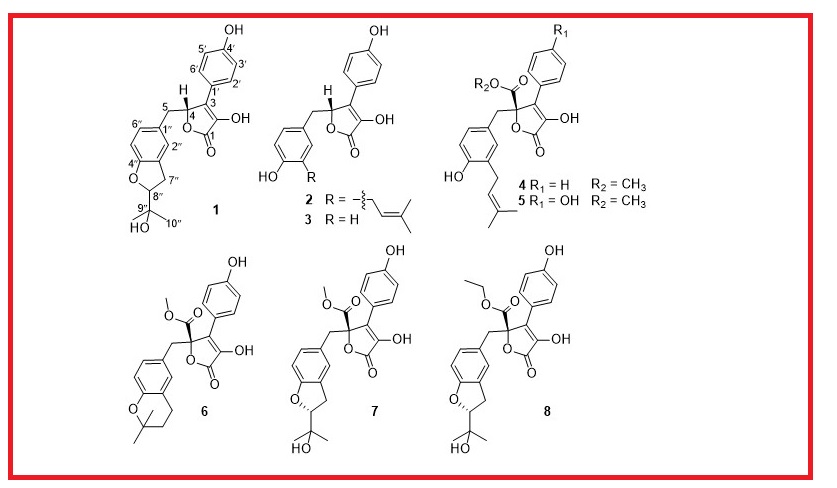JOURNAL 2786
Records of Natural Products
Year: 2023 Issue: 5 September-October
p.860 - 866
Viewed 2863 times.
GRAPHICAL ABSTRACT

ABSTRACT
The strain was isolated from the sea sediment of Hangzhou Bay and was cultured on solid fermentation using rice bran. The fermented material was extracted with ethyl acetate. The chemical study of the extract led to the isolation of 8 butenolide derivatives (1-8). Their structures were elucidated by detailed analyses of spectroscopic techniques including 1D and 2D NMR and HRESIMS data. The absolute configuration of 1 was determined by comparing the experimental ECD curve of 1 with that of the computed ECD curves of a model molecule (1a). A butenolide derivative was originally misassigned to bear the same structure as that of 1, but it was later revised. Thus, the compound 1 was reported as a new compound and was named 4-demethyl ester aspernolide N (1). The known compounds were identified as 3-hydroxy-5-[[4-hydroxy-3-(3-methyl-2-buten-1-yl)phenyl]methyl]-4-(4-hydroxyphenyl)-2(5H)-furanone (2), 4-(4-hydroxyphenyl)-5-(4-hydroxyphenylmethyl)-2-hydroxyfurane-2-one (3), versicolactone B (4), butyrolactone I (5), aspernolide A (6), butyrolactone IV (7), aspernolide O (8). Bioassay study suggested that compounds 2-6 had better inhibitory effects on a-glucosidase than that of the positive control acabose with IC50 values ranging from 95 to 148 mM.
KEYWORDS
- Butenolide derivatives
- Aspergillus terreus
- Inhibitory effects on alpha-glucosidase